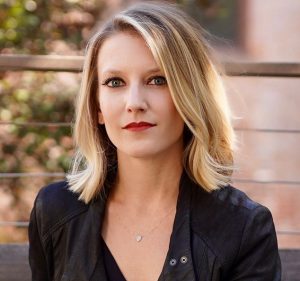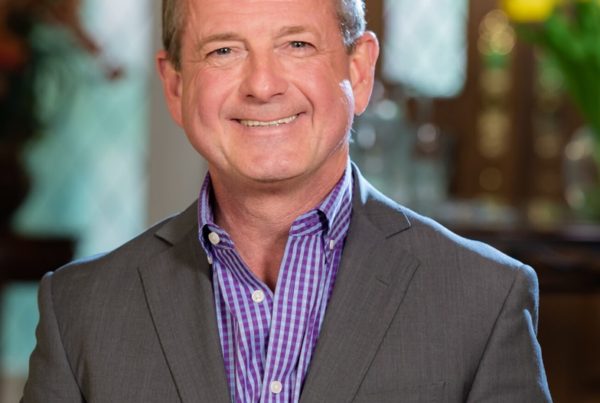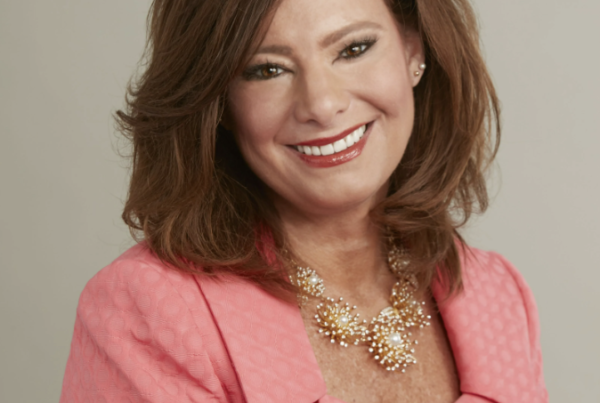Podcast: Play in new window | Download
Subscribe: RSS
How can you give the right kind of help to people in need?

Naysa Mishler
“Passion and conviction create change.” This belief is evident throughout Naysa Mishler’s 15 years of leadership at large tech companies and it is now driving the mission of Everest Effect, a disaster relief tech marketplace she co-founded to connect people in need with donors and brands who want to help.
Before launching Everest Effect, Naysa was the SVP of Global Brand and Product Marketing at Citi FinTech, where she led new product launches, including the world’s first FinTech beta testing community. Her career also includes marketing and business development roles at LinkedIn, Citi’s Women & Co., and WeWork.
Naysa is a member of Founder’s Pledge and a past board member of Step Up. She is proud to live in the vibrant community of Jersey City with her husband, son, and dog, Hudson.
What We Discuss With Naysa Mishler In This Episode
- Why the Everest Effect was created
- How the marketplace model works
- Adding a level of privacy and personalization
- How they’re supporting people in times of crisis
- What corporations are doing to create social impact
- How do they verify users that request help on the platform
Transcript Highlights
Why the Everest Effect Was Created
In the wake of Hurricane Harvey along with other disasters that happened in 2017, Naysa, along with a team of tech veterans wanted people to have access to capital. There was so much help being offered but most of them are wasted because the system was practically broken. They knew that applying the marketplace model to disaster relief would be effective.
There are a lot of people that want to help and just don’t know how to do it. It’s all coming from a good place, but it’s just absolutely not what’s needed and the needs change over time.
Over 60% of donations in kind end up in landfills or they just get dropped off at the emergency station and interfere with first responder efforts. People were sending winter coats and prom dresses for the Haiti earthquake victims.
So Naysa and her team created a digital marketplace. It’s the first one that directly connects the people in need with the donors and brands who want to help so there are no intermediaries. They’re not trying to compete with some of the larger name nonprofits, if anything, their platform will enable them.
How Does the Marketplace Model Work?
It’s almost like a wedding registry for relief for people impacted. They can go on and see resources of what’s available. They can also request items like diapers, pet food, and other things depending on the disaster. Then you have donors that can go in real-time and see the baskets of items that people have requested so they can purchase them on their behalf.
This is done through its partnership with Walmart. It’s a 100% model where you give $50 and it’s used to purchase those items. Then it’s delivered directly to the people that are in need.
Adding a Level of Privacy and Personalization
People have the affinity to support a group or cause or area they’re interested in. So they don’t want to expose too much information because people still want privacy even if they’ve lost everything. There’s a level of privacy but also a level of them sharing their story. The platform gives people the opportunity to do that.
This is powerful for donors, too, because they typically don’t get that level of detail when they give and they hope that it goes to the right place. It gives the donors a feeling of confidence in knowing these are real people with real needs. And they actually know where their money’s going, which is not something that happens in most cases.
They’ve had stories of mothers who have been through chemo and are in remission, but because of the current environment, they can’t go shopping for themselves, or people that have lost their jobs and have babies on the way or families to support.
How Do They Keep Up with the Changing Needs?
The needs are going to continue and they’re going to evolve. They’re also anticipating that there will be another crisis and event that happens. So they think about the full cycle and how they can support people through all the stages, but also for the smaller events that will happen while COVID is still going on.
For COVID, they’re supporting primarily the U.S. with donors coming from all around the world. Because of the supply chain infrastructure, they are focused on the U.S. because of the growing demand.
They have also supported the Australian bush fires and other events in the past. While each culture and country is unique, it plays out in a very similar fashion.
Now, they have enough experience and they have the right partners on the ground to help localize stuff. Although technology is solving a lot of it, there’s still that human element.
With experience and the right partnership, they can activate and support communities in the right way when these moments happen. Everest Effect has both private and public partnerships as well as nonprofit partnerships that have the scale and reach.
Corporate Response to Create Social Impact
Hurricane Katrina was a really big turning point for social impact. Walmart, for example, dramatically improved their own public image. They would use their supply chain to distribute goods and found ways to support employees and customers.
It changes the dialogue in terms of how companies play a role in the need for public and private to come together.
With the normal disaster, it’s more isolated to a certain state or an area. What’s unique about COVID is it has touched everybody. Now, you’re seeing hundreds and thousands of companies helping solve the challenges we’re all facing.
Aside from Walmart, other brands that are partnering with them include Airbnb, TaskRabbit, as well as other retail stores. There are a number of brands and local restaurants that have stepped up as well.
There are still so many companies that are just writing checks and checking the box. $10 billion has already been given across to a number of different causes whether it’s research or people in need, both COVID and non-COVID related.
How do they verify users that request help on the platform?
They spend a lot of time in their technology verifying users. They’re currently creating a system to measure the recovery and progress – not just by dollars donated, but by people’s lives truly returning to normal and people recovering. They ‘re working on measuring not only the progress of the individual but also the resilience of these communities.
Episode Resources
Connect With Naysa Mishler and The Everest Effect
- Website: https://www.everesteffect.com
- LinkedIn: https://www.linkedin.com/in/naysamishler
- Twitter: https://twitter.com/naysamishler
Did You Enjoy The Podcast?
If you enjoyed this episode please let us know! 5-star reviews for the Leaders Of Transformation podcast on Apple Podcasts, Spotify, Pandora or Stitcher are greatly appreciated. This helps us reach more purpose-driven entrepreneurs seeking to make a positive impact in the world. Thank you. Together, we make a difference!
Additional Episodes You May Like
- 318: Wendy Diamond: Animal Rescue, Women’s Entrepreneurship and Disruptive Technology
- 314: Eva Yazhari: Bringing Hope and Finances to Rural India and East Africa
- 310: Wendy Steele: Empowering Women and Transforming Lives
- 302: Darya Henig Shaked: Leveling the Playing Field for Women Entrepreneurs
- 185: Alejandra Castellanos Bar Av: Israel – A Hub For Emerging Technology and Entrepreneurship
- 106: Romy Kochan: Bonfires Of Social Enterprise










